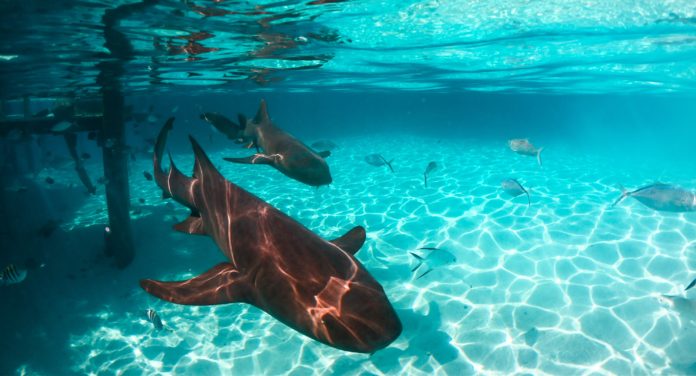Sharks have been around for nearly half a billion years, which makes them older than humanity, and even older than trees. They survived the mass extinction that wiped out the dinosaurs and at least three mass extinctions before that — but can they survive us?
According to a recent study from Simon Fraser University, the answer is still up in the air. Both oceanic shark and ray populations have have declined 71 percent over the last 50 years, and human influence in the form of overfishing appears to be the cause.
The study was led by Nathan Pacoureau, a Postdoctoral Scientist in SFU’s Earth to Ocean group, and published in Nature.
Shark and ray populations have declined drastically
Elasmobranchs — the subclass of fish that includes both sharks and rays — have been at risk of extinction for many years. And while this has prompted a number of regional assessments of shark and ray populations, these results had never previously been combined into a global perspective on shark population trends.
But sharks and rays play an important role in oceans across the world — from their spot at the top of the food chain, they maintain the balance between different predators and ensure species diversity. For this reason, a global perspective is crucial, and this is what Pacoureau and his team set out to find.
Using global observations of shark populations dating back to the 1970s, they calculated both the Living Planet Index (a measurement of a species’ population trends) and the Red List Index (a measurement of how at-risk a species is) for dozens of oceanic shark and ray species. By tracking these two measurements over time, they were able to determine how shark and ray populations have changed over the past several decades.
Their results were alarming: overall, they found that global populations of oceanic sharks and rays have declined by 71% since 1970.
“It’s much worse than other animal populations we’ve been looking at,” said Nick Dulvy, a Canada Research Chair in Marine Biodiversity and Conservation at SFU and co-author on the paper, in a press release. “It’s an incredible rate of decline steeper than most elephant and rhino declines.”
Overfishing is the most likely culprit
The team went on to examine possible causes for these alarming declines, and found that overfishing appeared to be the most likely culprit.
This conclusion was based on several key observations. For example, the team found that fishing with longlines and seine nets — the types of nets that catch the most oceanic sharks — has doubled over the past 50 years. This is just one part of an overall 18-fold increase in fishing pressures on oceanic shark and ray populations.
Often, sharks and rays are bycatch victims of these fishing practices — they aren’t the intended targets, but end up getting caught regardless.
One particularly problematic fishing practice is the use of longlines, which are composed of thousands of tiny hooks attached to a main fishing line. These are often designed to be left in the water for up to 12 hours at a time, and for shark species that need to keep swimming in order to survive, getting hooked on a long line will almost certainly lead to suffocation.
“We can see the alarming consequences of overfishing in the ocean through the dramatic declines of some of its most iconic inhabitants,” Pacoureau said.
“It’s something policy makers can no longer ignore.”
By focusing efforts on creating shark-friendly fishing techniques, policy makers may be able to reduce some of these pressures. Imposing bycatch limits could also help prevent fishers from unintentionally harming shark and ray populations.
The authors go on to discuss the need for increased conservations efforts going forward. Currently, very few countries impose catch limits for oceanic shark species, and even fewer can demonstrate efforts towards rebuilding shark populations.
Sharks play a crucial role in oceanic ecosystems. Implementing international catch limits and protections for these species is a necessary step towards making sure they survive the Earth’s sixth mass extinction event as well.









































